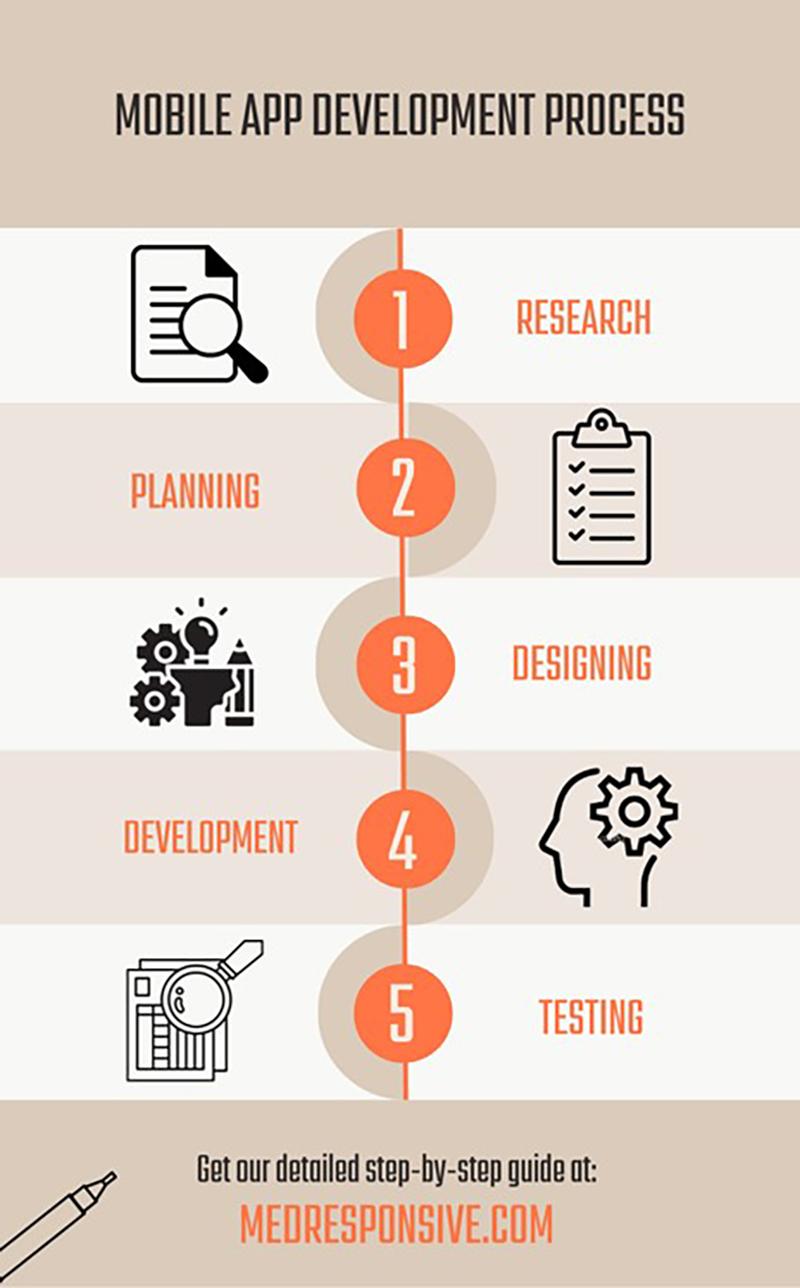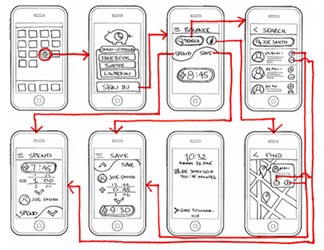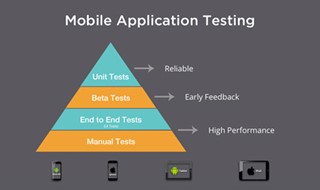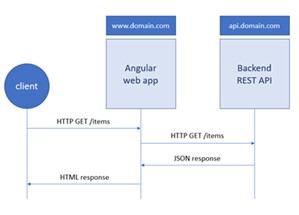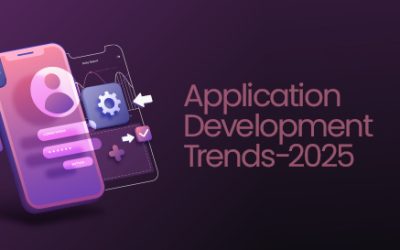Mobile apps are an essential part of today’s digital landscape, and the demand for new and innovative apps continues to grow. Apps are everything these days. They have become indispensable and offer a range of services for various aspects of existence, from paying bills, buying stuff and consulting physicians to gaming and entertainment. According to the report from Grand View Research, the global mobile application market size that was valued at USD 206.85 billion in 2022, is expected to grow at a compound annual growth rate (CAGR) of 13.8% from 2023 to 2030.
By investing in professional mobile app development services, businesses can easily connect with customers, reach a wider audience, encourage brand recognition and loyalty, and stay ahead of the competition.
Mobile App Development Process Steps
Developing a mobile app, however, is not a simple task. The process involves several key steps that need to be carefully planned and executed to ensure a successful project. In this article, we’ll explore the key steps involved in the mobile app development process.
Research
It all starts with research, wherein you’ll identify the app’s unique selling points. There are many aspects involved here:
- Research Your Business
The first field of research is your own business – what exactly does your business deal with, what kind of audience does it target, and what does it aim at attaining with its marketing program. When you do this research, you get to find out the kind of services your target customer really needs so you can figure out how to create an app that satisfies those requirements for your audience.
- Research Your Competitors
After you research the various aspects of your own business, you also need to look at your competitors and what they are offering with their apps. Can you go one step further than what they offer? Or can you provide a new spin on things? In any case, you must be able to exceed the expectations of your target audience.
Planning the App Creation
Once the idea is conceptualized, the next step is planning. This step involves creating a project plan and defining the scope, timelines, and budget for the app development project. This phase also includes defining the app’s target audience, identifying the app’s features, and creating a project roadmap. You need to put together a team of app development and programming experts, software developers and people from the concerned departments of your organization to whom you put your ideas forward. You also need to specify the timeline within which the app needs to be developed.
The Design Stage
Now you get to the design aspect. You need to start creating the skeleton of the app – the basic structure and what it should include. That’s called wireframing. Here, you formulate how the various features and ideas your team decided on will come together in a functional manner.
Image Source:
Quite like the script for a movie, you need to create a storyboard too for your app. This storyboard will show how each screen of the app connects to another. It formulates the path through which users would navigate your app. This is where you need to think of optimizing the user experience. Remember, user experience is everything for an app. You could incorporate all the features potential customers could want in your app, but if it isn’t user-friendly and engaging they just wouldn’t use it. You can also think of how to get your brand incorporated in the app.
The Backend Process
Next is the all-important backend process of your app development. The backend structures are the infrastructural elements that support your app. You can select a BaaS (backend as a service) platform that provides you scalable infrastructural solutions. It works for small businesses that perhaps don’t have the infrastructure or the team to handle the backend by themselves.
Larger organizations could handle the servers, data diagrams, data integration, APIs, etc. all in-house. Technical capabilities are essential during the backend process. If your backend doesn’t quite have the capability to support your storyboard or wireframes, you may have to change them, which is something you must be prepared for.
The Prototype Stage
Once all the required changes have been carried out as per your backend planning, you can go ahead and create a prototype of your app. A prototype helps you to get vital feedback about the potential app and also realize what needs to change. Flaws such as dead links, usability issues, design errors, etc. can all be identified and changed. Once the prototype is developed, you need to ask people who aren’t part of your design team to test it. These people must use your prototype the way your target audience would use your final app. Online prototyping tools are available that can help you with the process. The prototype also serves another important function – it is a template for the actual app development.
App Development
Once the prototyping stage is complete, you get to the main part of the process – the actual app development. This is the ultimate stage of the process where you create the final product that needs to be distributed through an app store. So, you not only have to design the app as per the guidelines of the app store through which you wish to distribute it, but also ensure the app can be easily accessed by your target audience. That’s the entire goal of this process anyway.
As we mentioned earlier, you can go for a BaaS solution, which is a simple way of handling it, or your developer must set up the databases, storage solutions, servers and APIs that make up the backend of your app. Programming and coding are the core tasks of app development. Large companies or businesses with a talented team can handle this in-house. Businesses can also outsource these tasks to a custom web application development company. If so, you need to make your objectives and timeline very clear to the external team.
The development stage is where your app designer needs to come up with the app skins which are renderings of the wireframes. These help you analyze your app design and interface and ensure they’ve come out just as planned or finalized in the testing stage.
Testing the App
Just like you tested the prototype, you need to test the final app rigorously. Every aspect of your app needs to be checked and re-checked. Compatibility of your app across platforms is essential. Again, you have online testing tools to evaluate the UX (user experience) of your app. These give you real-time analytics. You also need to bring in people outside your development team to test the app.
Once the testing has satisfactorily concluded, you can look forward to the launch and release of the app you’ve worked so hard for. There are things to remember here too:
The Launch & Marketing
The launch aspect is important, because how you launch determines how your efforts will be rewarded. If you outsource the whole app development process, the outsourcing provider could handle the marketing.
An experienced company providing search engine marketing in Long Island can offer great app marketing solutions. Otherwise you will need to rope in your marketing team. They bring in the SEO (search engine optimization), digital marketing and ASO (app store optimization) aspects into the equation. Getting these right is essential for your app to be discovered by your target audience. After all, that’s the whole point of all your efforts. Your target audience must know there’s a great app out there that satisfies their requirements.
SEO & Digital Marketing
- When you’re submitting your app to the stores, you have to present optimized title and description for your app. That’s what ASO is all about.
- To help your SEO and digital marketing efforts, you need a website too. The website helps raise awareness of your app and strengthen its branding.
- The landing page of your website must contain the name and icon of your app, logos of the app stores where your app is available, app screenshots, download links, subscription form if you’ve launched your website before the app’s release, social media links, etc.
- Social media marketing is essential to spread awareness of your app and get more people to use it. You can carry out email marketing and rope in social media influencers too.
It all depends on your strategy and budget. A comprehensive digital marketing company can develop the right strategy for you and incorporate the required marketing channels. With their experience, they probably know what your app needs to reach its target audience.
Generating Excitement before the Release
As your app release date approaches, you need to create excitement in advance. Put up social media posts, post blogs and articles preferably by influencers, send emails, whatever you can to generate the buzz. After the release, as you start getting new users, you need to keep them interested. Promotions or special offers can help. You can provide free service or a discount for users downloading your app for the first time. Push notifications can help.
You can get positive as well as negative comments through app store ratings or social media comments. Respond to them and make changes when required. Keep observing the performance of your app through analytics. This objective data can help you improve it.
Turn to experienced mobile app development companies that can take care of all the hassles involved in developing a great app, enabling your firm to focus on its core tasks. From research to the design stage, they can handle it all.
Need a high-quality, user-friendly app that meets the needs of your target audience?
Turn your vision into reality!
Contact us at (800) 941-5527 for expert mobile app development services!


